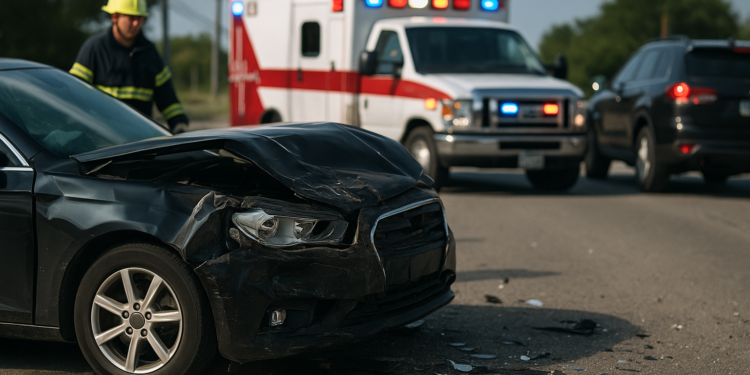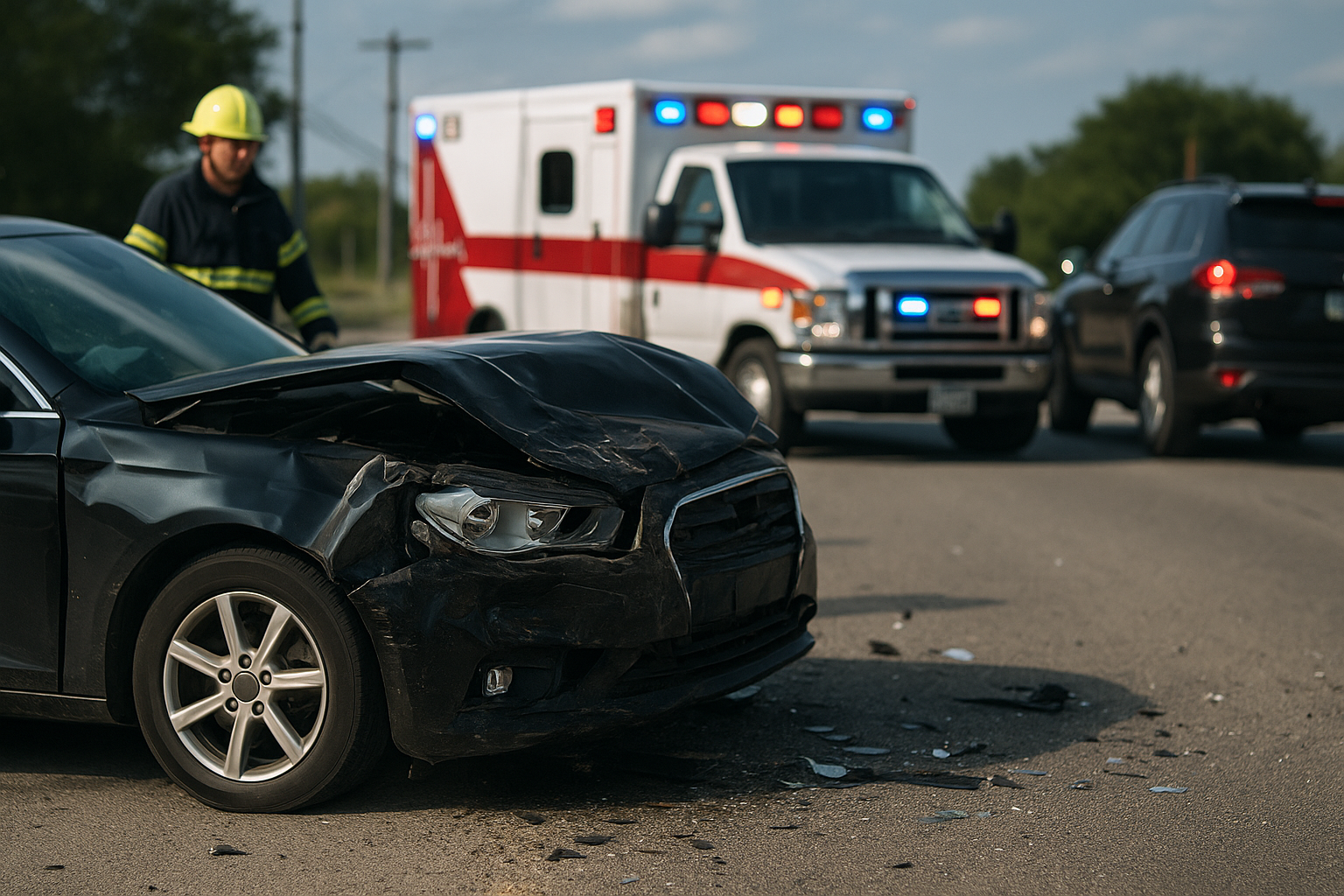The Top Reason Why Collisions Happen on the Road: Driver Behavior Uncovered

Table of Contents
What Are Road Collisions?
Road collisions—often called accidents or crashes—occur any time vehicles physically interact in ways that are not intended, usually resulting in damage, injury, or even death. These events may involve cars, trucks, motorcycles, cyclists, or pedestrians. The consequences can range from minor fender benders to tragic multi-car pileups. With tens of thousands of fatalities reported annually in the United States alone, road collisions are a significant public health concern. Their effects ripple beyond the drivers involved, impacting families, emergency responders, and entire communities. Among a wide variety of factors, research and extensive accident records confirm that the most common cause of a collision is rooted in the decisions people make behind the wheel.
The frequency and severity of these incidents raise essential questions: Are roads inherently dangerous, or do daily choices play a more decisive role? Every journey, from a daily commute to a cross-country trip, involves variables no one can completely control. Yet, understanding the most recurrent causes—particularly those within a driver’s control—puts meaningful solutions within reach. This awareness and commitment to small behavioral changes offer the most reliable route to safer roads.

The Leading Cause: Human Error
Statistical analyses consistently reveal that human error, not infrastructure or vehicles themselves, overwhelmingly tips the scales regarding crash causation. According to the National Highway Traffic Safety Administration, human choices contribute directly or indirectly to over 90% of road collisions. Mistakes can be distracted, impatience, misreading road signs, underestimating speed, or failing to account for changing weather or road surfaces. These seemingly minor lapses are responsible for a staggering portion of accidents.
Unlike vehicle failure or environmental hazards—events more difficult to predict or control—human behavior is something each driver can adjust. The margin for error on the road is thin. A moment’s inattention, an unchecked impulse, or a single careless action can cascade into lifelong consequences. In reality, driving safely is less about mastering the vehicle and more about mastering oneself and making conscious, responsible choices on every trip.
Common Risky Behaviors on the Road
- Distracted Driving: One of the most pervasive dangers, distracted driving goes far beyond texting. It includes talking on the phone, changing playlists, eating, managing children or pets, or even daydreaming. The Centers for Disease Control and Prevention report that each day, approximately eight people in the U.S. are killed in crashes involving a distracted driver. This figure reflects the urgency of the issue.
- Speeding: Exceeding speed limits—or driving too fast for conditions such as rain, fog, or construction zones—reduces the time a driver has to react and increases both the likelihood and severity of collisions.
- Impaired Driving: Alcohol and drugs impair judgment, coordination, and reflex time. Even some prescription medications, when misused, can lead to poor decision-making behind the wheel. According to national safety reports, impaired driving remains a persistent and deadly problem.
- Aggressive Driving: Tailgating, sudden lane changes, running red lights, and expressing road rage dramatically increase the likelihood of an accident and its consequences. These aggressive maneuvers put everyone at risk and escalate everyday situations unnecessarily.
Although these actions might feel insignificant at the time, their collective impact is enormous. Choosing to focus, maintain patience, and respect the rules of the road can prevent most collisions. Each driver’s commitment to safety—however routine the trip may seem—truly matters.
Recognizing Signs of Dangerous Driving
Staying alert isn’t just about what you do—it’s also about watching out for others. Recognizing risky driving before it results in a crash gives you valuable time to steer clear or take corrective action. Some warning signs to look for include:
- Sudden or repeated lane changes, especially without signaling
- Erratic braking or abrupt acceleration/deceleration
- Drifting between lanes or straddling lines
- Using a phone, looking away from the road, or wearing headphones
- Driving much faster or slower than the surrounding traffic
- Yelling, gesturing, or showing obvious frustration
If you notice these behaviors, create space and avoid confrontations. If you ride as a passenger and observe something unsafe, speak up kindly. A supportive reminder may make all the difference in arriving safely.
Prevention: Simple Steps for Safer Roads
Despite the intimidating numbers, preventing collisions is often a matter of forming steady, positive habits. Take these specific, actionable steps to help make every drive safer:
- Set your phone to “Do Not Disturb” while driving, or put it out of reach before starting your engine.
- Prepare your route to stay focused on the road, not your GPS.
- Adhere to posted speed limits and slow down during poor weather or heavy traffic.
- If you plan to drink or take medication, line up a designated driver ahead of time.
- Recognize your limits—avoid driving if fatigued, stressed, or emotionally upset.
- Schedule regular maintenance checks for your vehicle, paying special attention to brakes, tires, and lights.
How Communities and Tech Are Improving Road Safety
Communities everywhere are expanding their road safety initiatives. Campaigns in schools, improved signage, stricter enforcement, and redesigned intersections play vital roles in accident prevention. Additionally, the automotive industry embraces new technology that assists drivers behind the wheel. Emergency braking, lane departure warnings, adaptive cruise control, and even semi-autonomous cars are now widely available, helping to keep human error at bay.
Experts agree that while technology reduces risk, it’s not a cure-all for unsafe behavior. New research and ongoing efforts to analyze accident trends, such as those highlighted in recent traffic fatalities news and statistics, continue to shape the dialogue on what works and what gaps remain. A collaborative approach—where every driver, policymaker, and engineer plays a role—delivers the strongest returns in pursuing safer roads.
What Drivers Can Do Today
Ultimately, responsible driving is about more than just following the rules—it’s about embracing a safety-first mindset whenever you get behind the wheel. Rather than viewing road safety as solely a community or technological issue, each person can make a direct impact by acting attentively and defensively on the road. Pay close attention to your actions, limit distractions, practice patience, and look out for those around you.
Share these habits with friends and family, and don’t hesitate to model safe behaviors even on routine trips. Your difference might not always be visible, but it’s there—every safe journey represents a win for everyone on the road. Together, one decision at a time, drivers can dramatically lower the statistics and turn the tide against preventable collisions.

